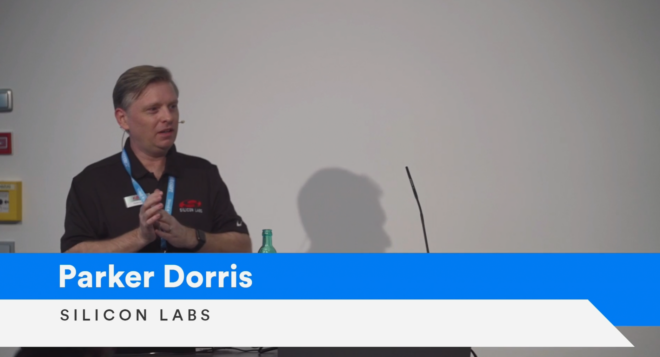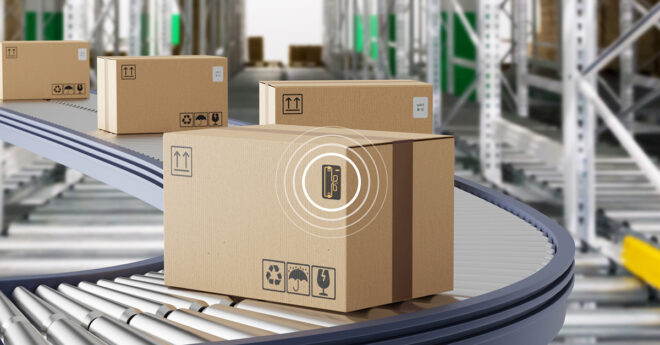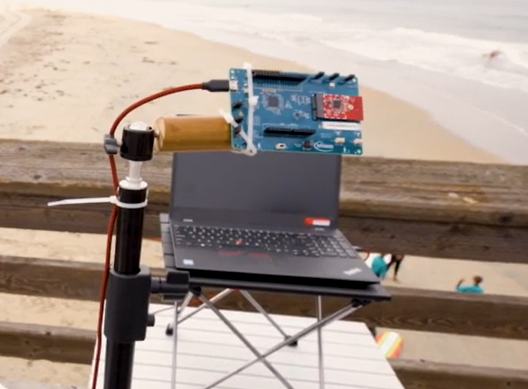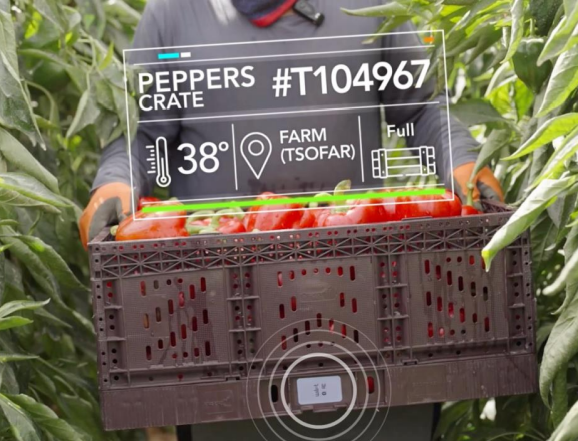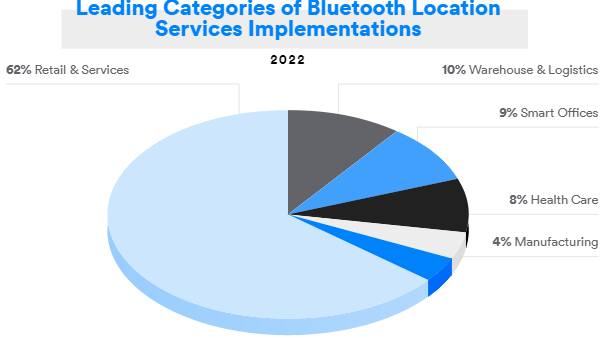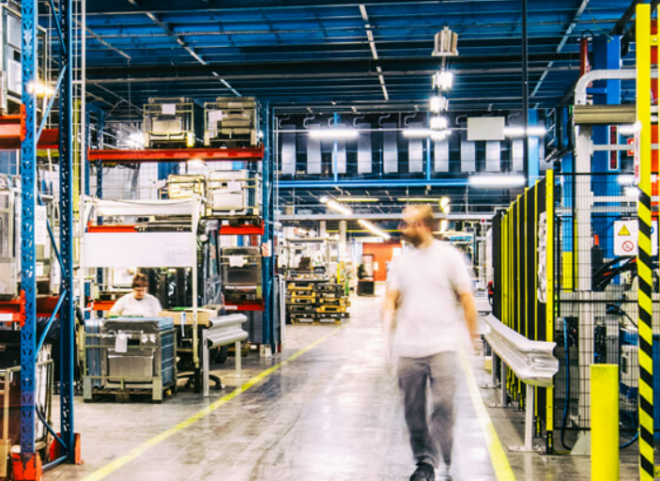Recently, there’s been a lot of discussion around the supply chain. And as crisis concerns grow with no immediate solution in sight, companies around the world are looking for a serious enabler to optimize the supply chain.
![]()
Supply vs. Demand Chain
Through the management of logistics, operations, marketing and sales, and services, an organization creates a supply chain to deliver goods or services to a consumer. By anticipating the needs of the consumer, an organization can balance its expenditure of resources to meet market demand.
In the demand chain, the consumer initiates the flow of goods. By managing and better understanding relationships between consumers and suppliers, organizations can use information obtained through their demand chain to create greater operational efficiencies and minimize costs.
“The supply chain originates at the sources of supply and flows toward the customer, whereas the demand chain flows backward from the customer and ends up with the enterprise,” said Hokey Min, author of The Essentials of Supply Chain Management: New Business Concepts and Applications.
In a situation where supply chains around the world are in crisis, how can technology be used to optimize demand chain efficiencies?
How Bluetooth Technology Can Help
Advancements in Bluetooth® technology have paved the way for the development of battery-free tags which are becoming a crucial, low-cost solution for demand-chain optimization.
One company offering a battery-free solution to help enhance an organization’s demand chain is Wiliot. Wiliot is bringing its energy-harvesting, stamp-sized Bluetooth tags to a wide range of industries. This tag does not need a battery and has multiple sensors for everything from movement to fill levels to temperature to humidity to tamper detection. The tags can track a wide range of assets, from pallets in a warehouse to individual items in a store. Without batteries, they are a low-cost solution that is easy to deploy in mass. “For a truly efficient supply chain…we need to capture demand signals from customers as they are using products at work or at home,” said Steve Statler, Wiliot SVP of marketing. “The ubiquitous presence of Bluetooth technology is unique in facilitating that.”
Wiliot Bluetooth tags are already being used in grocery stores, clothing outlets, and to track medical supplies. “When the pandemic started, we integrated Bluetooth® IoT Pixels into vaccine vials to measure temperature over time and whether the vaccine was correctly diluted before administration to improve safety,” said Statler.
Bluetooth Tags in Grocery Stores
In grocery chains, Wiliot Bluetooth tags are attached to crates, allowing them to help reduce food waste, extend shelf life, and improve quality by measuring the FIFO (first in, first out) flow of the produce that travels from farm to store. By measuring the temperature of fruit and vegetables over time and spotting instances where crates start to get out of sequence, they can avoid leaving food to age at the back of storage spaces or at the wrong temperature.
According to the Food and Agriculture Organization of the UN, food systems consume about 30 percent of available global energy, 38 percent of which goes into producing food that is either lost or wasted. “Traceability and continuous tracking of where assets are is the key to addressing this and managing food safety and recall issues,” said Statler. “Not only can this make administering recalls safer and more efficient, but reducing food waste and the methane that results from rotting food can play a major part in the fight against climate change.”
![]()
ON-DEMAND WEBINAR
The Myths & Facts about Bluetooth® Technology as a Positioning Radio
Watch this detailed discussion into the challenges and opportunities in front of indoor location services systems and how to tap into their potential in manufacturing, logistics, retail, offices, and more.
Bluetooth Tags in Clothing Outlets
Wiliot Bluetooth® tags can help retailers transition to a more efficient store model – forecasting demand and optimizing inventory levels, understanding customer behavior, and preventing theft and loss. By tagging clothing items with Bluetooth tags broadcasting advertising packets, stores could measure item-level replenishment to avoid out-of-stock products. This enables a smaller store footprint and better service with fewer staff. The conversion rate of items brought into the changing rooms and then purchased or not could also be measured, allowing stores to forecast returns and help predict customer satisfaction.
Using Bluetooth enabled tags, retailers can:
- Achieve item-level product intelligence and a continuous view of how inventory flows from manufacturer to the customer
- Automate their supply chain and inventory to satisfy demand forecasts quicker and with greater cost effectiveness
- Satisfy consumers and generate revenue by increasing on-shelf availability, improving merchandising, and reducing the quantity of overstock and out-of-stock items
“Demand signals – such as an out-of-stock notice from a smart shelf in a remote store or even a customer picking up a product in a store, trying it on, or using it at home – can provide the information necessary to run a much leaner supply chain and avoid problems of product hoarding and surpluses,” said Statler.
A New Generation of Battery-Free IoT
Avery Dennison, a strategic investor in Wiliot, will integrate Wiliot sensing services (SaaS) with its connected product cloud, enabling tag sensing information to be added to the end-to-end item-level data of a connected product. Both companies share a vision for the future of the IoT where almost everything is connected to the internet.
The partnership will help scale the manufacturing capacity of Wiliot tags significantly and will enable the company to deliver on big projects to some of the world’s largest retail, food & beverage, and pharmaceutical brands. “Wiliot’s passive Bluetooth technology offers the ability to work with the existing infrastructure and provides another accelerator to the growth of IoT,” said Francisco Melo, vice president and general manager, Avery Dennison Smartrac. “Combined with sensing capabilities and security features as standard, this expands our portfolio and opens up many new use cases for our customers and partners.”
A Battery-Free Revolution
Of course Wiliot is not the only company using Bluetooth® technology to create battery-free IoT solutions that will optimize the demand chain.
Recently, Atmosic partnered with Energous to build a development kit for engineers looking to use over-the-air wireless power. The Wirelessly-Charged Sensor Evaluation Kit from Atmosic and Energous features two Bluetooth Low Energy (LE) radio frequency (RF) harvesting sensor modules that transmit real-time temperature, humidity, and acceleration readings to the Energous WattUp Application. Data transmission happens while operating from energy harvested at distances of two meters from the WattUp transmitter, making this solution ideal for industrial IoT, healthcare, and retail applications. “The combination of our Bluetooth LE with power harvesting capabilities and Energous’ FCC-certified 1W transmitter will open up over-the-air wireless power transfer for a variety of our customers’ IoT applications,” said David Su, CEO of Atmosic Technologies.
By leveraging Bluetooth® technology to help better understand the needs of consumers, organizations can establish an energy-efficient, optimized demand chain that creates greater operational efficiencies while minimizing costs.
Learn more about how Bluetooth enabled tags are helping to improve operational efficiencies across a wide range of demanding commercial and industrial spaces.

FEATURED INNOVATION
Auracast™ Broadcast Audio
Auracast™ broadcast audio will deliver life-changing audio experiences that will enhance the way you engage with others and the world around you.
ここ最近、サプライチェーンに関連する多くの議論が交わされています。また、すぐに解決できるソリューションがない一方で危機に対する懸念が高まっているため、世界中の企業がサプライチェーンの実質的な最適化を図るソリューションを探しています。
サプライ vs デマンドチェーン
企業は物流をはじめ、オペレーション、マーケティング・営業、サービスの管理を通じて、商品やサービスを顧客に提供するためのサプライチェーンを構築しています。また、消費者の需要予測をすることで、企業は市場のニーズや変化に対応する適切なリソース費用の配分を実現できます。
デマンドチェーンにおいては、消費者の選択・決定によって商品の流通が始まります。企業は消費者とサプライヤーの関係を管理し、理解を深めることで、運用効率を向上し、またコストを最低限に抑えるべく、自社のデマンドチェーンから入手した情報を活用できます。
『The Essentials of Supply Chain Management: New Business Concepts and Applications』の著者、ホーキー・ミン(Hokey Min)氏は「サプライチェーンは供給源から顧客への流れだが、デマンドチェーンはその逆で、顧客から始まり最終的に企業で終わる流れである」と述べています。
では、世界のサプライチェーンが危機的状況にある場合、デマンドチェーンの効率を最適化するためにどのように技術を活用できるでしょうか。
Bluetooth技術の有効性と効果的な活用方法
Bluetooth®技術の発展は、バッテリーレスタグの開発の道を拓きました。バッテリーレスタグは、現在デマンドチェーンを最適化するために欠かせない低コストのソリューションになりつつあります。
Wiliotは、ユーザー企業がデマンドチェーンを強化できるよう支援するバッテリーレスソリューションを開発しています。同社は幅広い業界向けに環境発電による切手サイズのBluetoothタグを提供しています。電池不要のこのタグには、モノの動きや容量から、温度や湿度、さらには改ざんまで、あらゆる情報を検知する複数のセンサーが備えられています。このタグは、倉庫のパレットから店内の個別の商品まで幅広い資産を追跡できます。電池不要のため、大規模導入しやすい低コストのソリューションとなります。Wiliotでマーケティング部門のSVPを務めるスティーブ・スタットラー(Steve Statler)氏は次のようにコメントしています。「本当に効率的なサプライチェーンを実現するためには…、顧客・ユーザーからの需要シグナルを取り込む必要があります。なぜなら職場や自宅で商品を使用しているのは顧客・ユーザーだからです。彼らの需要を取り入れることを容易にするという点で、日常生活に遍在するBluetooth技術に勝る技術はありません」
WiliotのBluetoothタグは、すでにスーパーやアパレルショップで使用されているだけでなく、医療品のトラッキングにも使用されています。スタットラー氏はBluetooth技術導入を進めた当時のことを次のように振り返ります。「新型コロナウイルス感染症の感染が拡大し始めた頃、当社は安全性を向上することを目的に、時間による温度変化を測定し、投与前に適切に希釈されたことを確認するため、ワクチンバイアルにBluetooth® IoTピクセルを内蔵しました」
スーパーで使用されるBluetoothタグ
スーパーでは、箱・ケースにWiliot Bluetoothタグが貼付されます。農場から店舗に運ばれる農産物のFIFO(First-In First-Out、先入れ先出し)の流れを測定するこのタグは、食品の廃棄量を軽減し、賞味期限を延ばし、品質を向上することに寄与します。具体的には時間による果物や野菜の温度変化を測定し、箱・ケースの順序に問題が生じる事例を特定することで、保管場所の奥に食品が放置され古くなってしまうことや、誤った温度で保管することを防ぐことができます。
国際連合食糧農業機関によれば、フードシステムは利用できる世界のエネルギーの約30%を占めており、うち38%が生産過程で廃棄される食品もしくは消費者によって廃棄される食品の生産に使用されています。スタットラー氏は次のように指摘します。「この問題に対応し、さらに食品の安全とリコールの問題を管理するためには、トレーサビリティと資産の継続的な追跡が鍵となります。より安全かつ効率的にリコールを管理することだけでなく、食品廃棄物と腐った食品から生じるメタンを減らすことも可能にするため、Bluetoothタグは気候変動との闘いにおいて重要な役割を担うことができます」
アパレルショップで使用されるBluetoothタグ
WiliotのBluetooth®タグは、需要予測による在庫量の最適化を実現し、また利用客の行動について理解を深め、盗難や紛失を防止するなど、リテーラーがより効率性の高い店舗モデルへと移行できるよう支援します。アドバタイジングパケットを配信するBluetoothタグをアイテムに取り付けることで、店舗はアイテムレベルで補充すべき数量を計測できるため、品切れを防ぐことができます。これにより、店舗面積を縮小し、さらに少ないスタッフでより優れたサービスを提供できるようになります。さらに試着室に持ち込まれ購入されたアイテムと購入されなかったアイテムのコンバージョン率も測定できるため、店舗は、返品と顧客満足度も予測できるようになります。
Bluetooth対応タグを使用することでリテーラーができること:
- アイテムレベルで商品に関する情報を入手し、メーカーから顧客までの在庫の流れを継続的に確認できます
- サプライチェーンと在庫を自動化し、より速やかに、さらにコスト効率に優れた方法で需要予測を満たすことができます
- 在庫量を増やし、販売方法を改善し、過剰在庫や品切れの商品の数を減らすことで、消費者を満足させ、収益を生むことができます
「離れた場所にある店舗のスマートシェルフからの品切れ通知や、店舗で商品を手に取ったり試着したりした利用客、自宅で実際に商品を使用しているユーザーなどの需要シグナルから、より無駄のないサプライチェーンを運用し、商品の買いだめや余剰の問題を避けるために必要な情報が得られます」とスタットラー氏は言います。
新世代のバッテリーレスIoT
Wiliotの戦略的投資企業であるAvery Dennisonは、コネクテッドプロダクトのエンドツーエンドのアイテムレベルのデータにタグが検出した情報を追加することを可能にするため、Wiliotのセンシングサービス(SaaS)と自社のコネクテッドプロダクトクラウドを統合する予定です。WiliotもAvery Dennisonも、同じIoTの未来、すなわちほぼすべてのモノがインターネットに接続された未来を描いています。
このパートナーシップは、Wiliotのタグの製造能力を拡大するものとなります。また、このパートナーシップによって、Avery Dennisonは世界最大手のリテール、食品・飲料、医薬品ブランドのために大規模なプロジェクトを実現できるようになるでしょう。Avery Dennison Smartracのバイスプレジデント兼ゼネラルマネージャー、フランシスコ・メロ(Francisco Melo)氏は次のように語ります。「WiliotのパッシブなBluetooth技術は、既存のインフラストラクチャを使用して業務を遂行する機能を提供し、IoTの成長を加速させるもうひとつの要因となります。センシング機能とセキュリティ機能の両方が標準装備されたこの技術は、当社の製品ポートフォリオを拡充するだけでなく、当社のお客様やパートナー様に多くの新しいユースケースをもたらします」
バッテリーレスによって変わる未来
言うまでもなく、デマンドチェーンを最適化するバッテリーレスIoTソリューションを製造するためにBluetooth®技術を使用している企業はWiliotだけではありません。
先日Atmosicは、OTAワイヤレス電力の使用を希望しているエンジニア向けに開発キットを構築するため、Energousとの提携を発表しました。AtmosicとEnergousが開発したワイヤレス充電式センサー評価キットには、Bluetooth Low Energy(LE)のRF発電によるセンサーモジュールが2つ装備されています。これらのモジュールは、温度、湿度、加速値をEnergousのWattUpアプリケーションにリアルタイムで送信します。WattUpトランスミッターから2m離れた場所で発電された電力で動作中にデータが送信されるため、このソリューションはインダストリアルIoTや医療、リテール用途に理想的なソリューションとなります。Atmosic TechnologiesのCEO、デヴィッド・スー(David Su)氏も、「発電機能が装備されたBluetooth LEとEnergousのFCC認証取得済みの1Wトランスミッターを組み合わせることで、お客様の幅広いIoT用途向けにOTAワイヤレス電力伝送を提供できるようになります」と述べています。
消費者のニーズについて理解を深めるためにBluetooth®技術を活用することで、企業はコストを最低限に抑えつつ運用効率を向上する電力効率に優れた最適化されたデマンドチェーンを構築できます。
要求の厳しいさまざまな商業および産業市場において、運用効率のさらなる改善を実現すべくBluetooth対応タグの有効性に関する詳細を、是非ご確認ください。

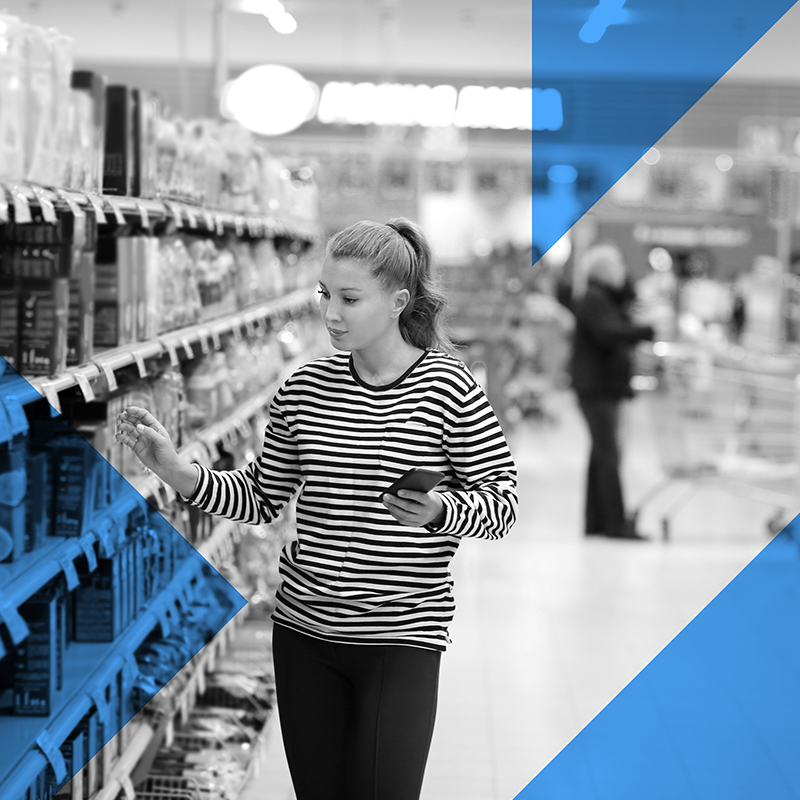
![Forbes Predictions article 72 dpi 1300 x 680 px 768x402[1]](https://www.bluetooth.com/wp-content/uploads/2024/04/Forbes-Predictions-article-72-dpi-1300-x-680-px-768x4021-1-660x345.png)

